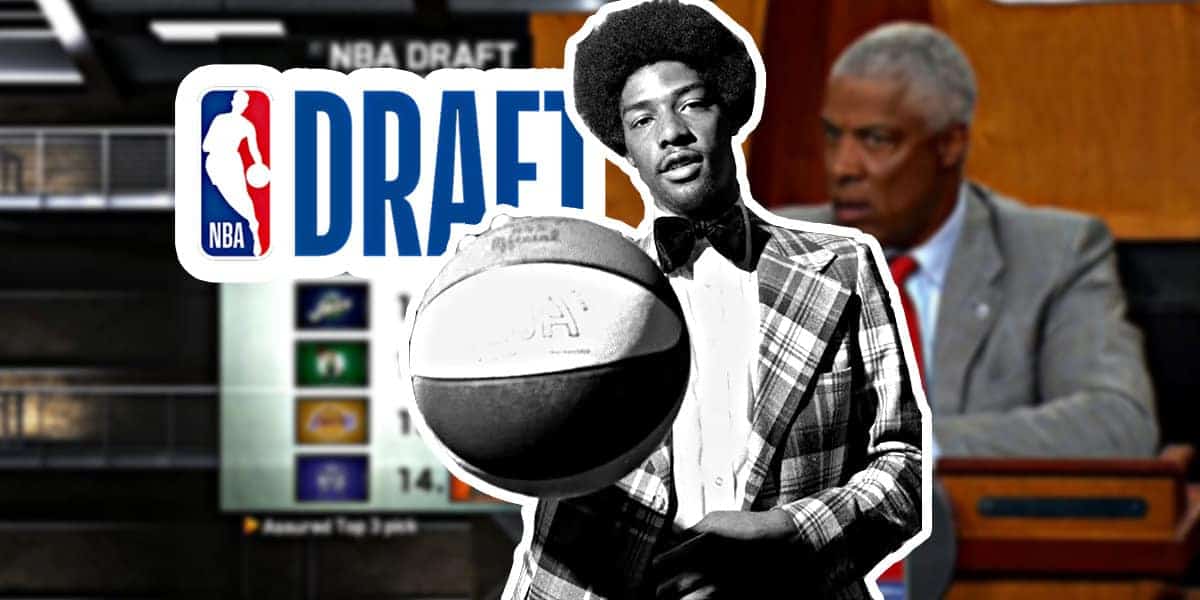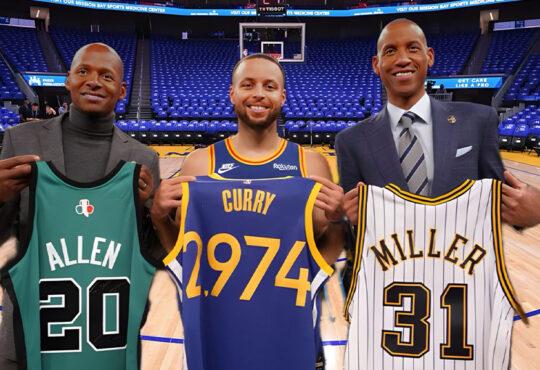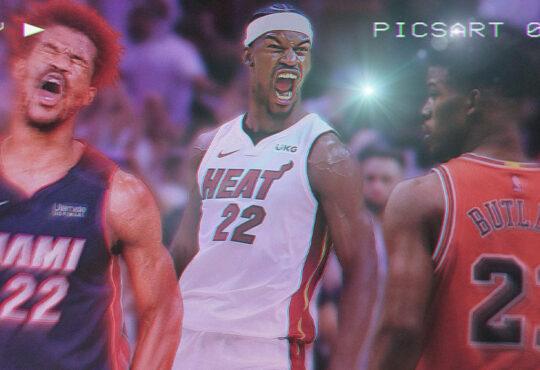
When was Dr. J Drafted?
When was Dr. J Drafted? Julius Erving is one of the most influential players in the history of the NBA, a great scorer, and the first great dunker the basketball has seen. He is widely known as Doctor J.
Dr. J was drafted with the 12th pick in the 1972 NBA Draft by the Milwaukee Bucks. If he really went to Milwaukee, Erving would have played with Oscar Robertson and Kareem Abdul-Jabbar which would probably be one of the best teams of all time.
Prior to the draft, Erving signed a contract with the Atlanta Hawks worth more than $1 million with a $250,000 bonus. The signing with the Hawks came after a dispute with the Virginia Squires where he demanded a renegotiation of the terms. He discovered that his agent at the time, Steve Arnold, was employed by the Squires and convinced him to sign a below-market contract.
This created a dispute between three teams in two leagues. The Bucks asserted their rights to Erving via the draft, while the Squires went to court to force him to honor his contract. Erving joined Pete Maravich at the Hawks’ training camp, as they prepared for the upcoming season. He played two exhibition games with the Hawks until NBA Commissioner J. Walter Kennedy ruled that the Bucks owned Erving’s rights via the draft. Kennedy fined the Hawks $25,000 per game in violation of his ruling. Atlanta appealed Kennedy’s decision to the league owners, who also supported the Bucks’ position. While waiting for the owners’ decision, Erving played in one more preseason game, earning the Hawks another fine. Erving enjoyed his brief time with Atlanta, and he would later duplicate with George Gervin his after-practice playing with Maravich.
On October 2, 1972, Judge Edward Neaher issued an injunction that prohibited him from playing for any team other than the Squires. The judge then sent the case to arbitration because of an arbitration clause in Erving’s contract with Virginia. He agreed to report to the Squires while his appeal of the injunction made its way through the court.
Back in the ABA, his game flourished, and he achieved a career-best 31.9 points per game in the 1972–1973 season. The following year, the cash-strapped Squires sold his contract to the New York Nets.
Erving is the only player in the history of basketball who has won the MVP Award in both ABA and NBA. He was the biggest star in the ABA when that league merged with the NBA after the 1975-76 season.
Erving spent 16 seasons in the game with the Virginia Squires in the ABA and the New York Nets and the Philadelphia 76ers. His teams never missed a playoff and he was named an All-Star in each season. Erving won three championships, two in the ABA and one with the Sixers in the 1983 NBA Finals.
He won four MVP Awards, three times in the ABA and once in the NBA. Erving won three championships, four Most Valuable Player awards, and three scoring titles with the ABA’s Virginia Squires and New York Nets and the NBA’s Philadelphia 76ers. He is the eighth-highest scorer in ABA/NBA history with 30,026 points.
These accomplishments sound great but what makes Dr. J a real basketball icon is that he was the player who made the dunking the most attractive part of basketball.
While Connie Hawkins and Gus Johnson performed spectacular dunks before Erving’s time, Dr. J brought the dunking into the mainstream. The Slam dunk was his signature move since he incorporated it into the basic skill set of the game in the same manner as the crossover dribble and the no-look pass.
Before Erving, dunking was a practice most commonly used by the big men, usually standing close to the hoop, to show their brutal strength which was seen as style over substance, even unsportsmanlike.
However, the way Dr. J utilized the dunk more as a high-percentage shot made at the end of maneuvers generally starting way away from the basket and not necessarily a show of force helped to make the shot an acceptable, especially in trying to avoid a blocked shot.
Although the slam dunk is still widely used as a show of power and a way to fire up a team and spectators, Erving demonstrated that there can be great artistry and almost balletic style to dunking the ball into the hoop, particularly after launching several feet from the rim.
Erving started playing basketball at the Roosevelt High School where he got the nickname Dr. J from his teammate Leon Saunders. He explains: “I started calling Saunders ‘the professor’, and he started calling me ‘the doctor’. So it was just between us. We were buddies, we had our nicknames and we would roll with the nicknames. And that’s where it came from.”
Erving recalled that “later on, in the Rucker Park league in Harlem, when people started calling me ‘Black Moses’ and ‘Houdini’, I told them if they wanted to call me anything, call me ‘Doctor'”. Over time, the nickname evolved into “Dr. Julius” and finally “Dr. J.” Erving was first called “Dr. J” by his friend and future teammate on the Nets and Squires, Willie Sojourner.
Erving played college basketball at the University of Massachusetts Amherst. In two varsity college basketball seasons, he averaged 26.3 points and 20.2 rebounds per game, becoming one of only six players to average more than 20 points and 20 rebounds per game in NCAA basketball.
At that time, the NCAA enforced a rule prohibiting dunking which made Erving leave college basketball and join the ABA.
Although NBA rules at the time did not allow teams to draft players who were less than four years removed from high school, the ABA instituted a “hardship” rule that would allow players to leave college early. Erving took advantage of the rule change and left Massachusetts after his junior year to sign a four-year contract worth $500,000 for seven years with the Virginia Squires.
Erving quickly established himself as a force and gained a reputation for hard and ruthless dunking. He scored 27.3 points per game as a rookie, was selected to the All-ABA Second Team, made the ABA All-Rookie Team, led the ABA in offensive rebounds, and finished second to Artis Gilmore for the ABA Rookie of the Year Award.
Erving went on to lead the Nets to their first ABA title in 1973–74, defeating the Utah Stars. Erving made a name for himself as the most important player in the ABA. His spectacular play established the Nets as one of the better teams in the ABA and brought fans and credibility to the league.
The end of the 1975–76 ABA season finally brought the ABA–NBA merger. The Nets and Nuggets had applied for admission to the NBA before the season, in anticipation of the eventual merger that had first been proposed by the two leagues in 1970 but which was delayed for various reasons, including the Oscar Robertson free agency suit (which was not resolved until 1976). The Erving-led Nets defeated the Denver Nuggets in the ABA’s final championship.
In the postseason, Erving averaged 34.7 points and was named the Most Valuable Player of the playoffs. That season, he finished in the top 10 in the ABA in points per game, rebounds per game, assists per game, steals per game, blocks per game, free throw percentage, free throws made, free throws attempted three-point field goal percentage and three-point field goals made.
After the merger of ABA and NBA, the Knicks demanded that the Nets pay them $4.8 million for “invading” the Knicks’ NBA territory. The Nets offered the Knicks Erving for that which the Knicks denied making one of the worst decisions in the club’s history. In the end, the Nets offered Erving to the Sixers who paid $3 million for him and the rest is history.
For all intents and purposes, the Nets traded their franchise player for a berth in the NBA. The Erving deal left the Nets in ruin; they promptly crashed to a 22–60 record, the worst in the league. Years later, Boe regretted having to trade Erving to join the NBA, saying, “The merger agreement killed the Nets as an NBA franchise.”
Erving quickly became the leader of his new club and led them to an exciting 50-win season. However, playing with other stars-such as former ABA standout George McGinnis, future NBA All-Star Lloyd Free, and aggressive Doug Collins allowed him to focus on playing more team-oriented ball. Despite a smaller role, Erving stayed unselfish. The Sixers won the Atlantic Division and were the top drawing team in the NBA. They defeated the defending champions, the Boston Celtics, to win the Eastern Conference. Erving took them into the NBA Finals against the Portland Trail Blazers of Bill Walton. After the Sixers took a 2–0 lead, however, the Blazers ran off four straight victories after the famous brawl between Maurice Lucas and Darryl Dawkins which ignited the Blazers’ team.
Erving enjoyed success off the court, becoming one of the first basketball players to endorse many products and to have a shoe marketed under his name. He also starred in the 1979 basketball comedy film, The Fish That Saved Pittsburgh. In the following years, Erving coped with a team that was not yet playing at his level. It took a few years for the Sixers franchise to build around Erving. Eventually, coach Billy Cunningham and top-level players like Maurice Cheeks, Andrew Toney, and Bobby Jones were added to the mix and the franchise was very successful.
The Sixers were still eliminated twice in the Eastern Conference Finals. In 1979, Larry Bird entered the league, reviving the Boston Celtics and the storied Celtics–76ers rivalry; these two teams faced each other in the Eastern Conference Finals in 1980, 1981, 1982, and 1985. The Bird vs. Erving matchup became arguably the top personal rivalry in the sport (along with Bird vs. Magic Johnson), inspiring the early Electronic Arts video game One on One: Dr. J vs. Larry Bird. In 1980, the 76ers prevailed over the Celtics to advance to the NBA Finals against the Los Angeles Lakers. There, Erving executed the legendary “Baseline Move”, a behind-the-board reverse layup. However, the Lakers won the series 4–2 with superb play from, among others, Magic Johnson.
Erving was again among the league’s best players in the 1980–1981 and 1981–1982 seasons, although more disappointment came as the Sixers stumbled twice in the playoffs: in 1981, the Celtics eliminated them in seven games in the 1981 Eastern Finals after Philadelphia had a 3–1 series lead, but lost both Game 5 and Game 6 by 2 points and the deciding Game 7 by 1; and in 1982, the Sixers managed to beat the defending champion Celtics in seven games in the 1982 Eastern Finals but lost the NBA Finals to the Los Angeles Lakers in six games. Despite these defeats, Erving was named the NBA MVP in 1981 and was again voted to the 1982 All-NBA First Team.
For the 1982–83 season, the Sixers obtained the missing element to combat their weakness at their center position, Moses Malone. Armed with one of the most formidable and unstoppable center-forward combinations of all time, the Sixers dominated the whole season, prompting Malone to make the famous playoff prediction of “fo-fo-fo (four-four-four)” in anticipation of the 76ers sweeping the three rounds of the playoffs en route to an NBA title. In fact, the Sixers went four-five-four, losing one game to the Milwaukee Bucks in the conference finals, then sweeping the Lakers to win the NBA title.
Erving maintained his all-star caliber of play into his twilight years, averaging 22.4, 20.0, 18.1, and 16.8 points per game in his final seasons. In 1986, he announced that he would retire after the season, causing every game he played to be sold out with adoring fans. That final season saw opposing teams pay tribute to Erving in the last game Erving would play in their arenas, including in cities such as Boston and Los Angeles, his perennial rivals in the playoffs.
Erving retired in 1987 at the age of 37. In his ABA and NBA careers combined, he scored more than 30,000 points. In 1993, Erving was elected to the Naismith Memorial Basketball Hall of Fame. When he retired, Erving ranked in the top five in scoring (third), field goals made (third), field goals attempted (fifth) and steals (first).







